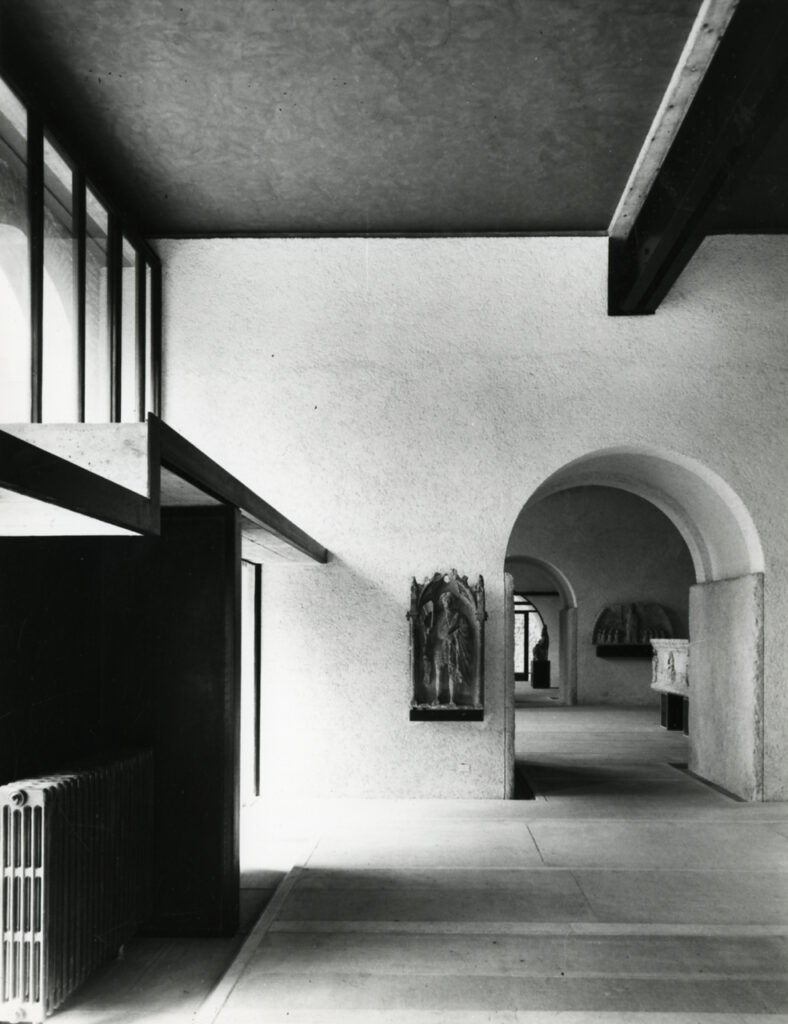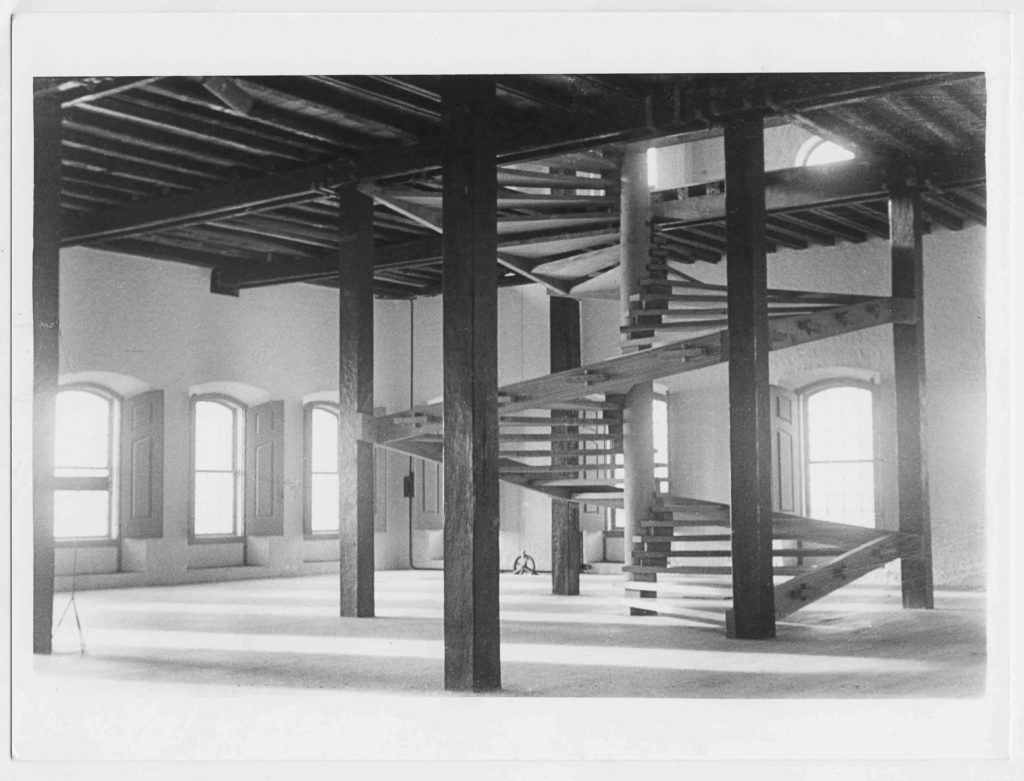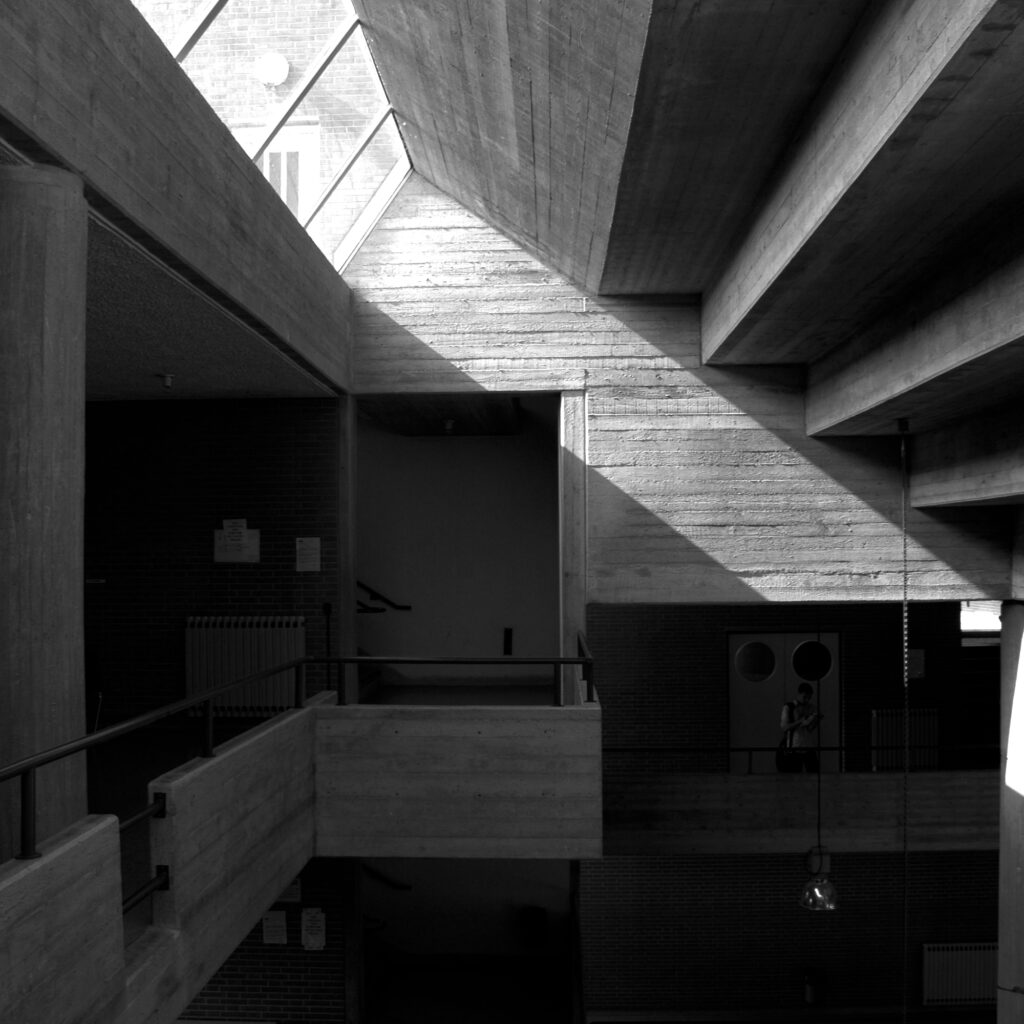
Source: Wikimedia Commons. Licence: CC BY-SA 4.0
From 5th to 7th September 2023 the Flanders Architecture Institute and Hasselt University are organising the international colloquium As Found. It aims to bring together designers, researchers and students to discuss experimental concepts and practices to intervene in the existing built environment and heritage.
The colloquium is closely linked with the exhibition As Found which will take place from September 2023 until March 2024 in De Singel in Antwerp.
The work of architects nowadays increasingly consists of intervening in already existing buildings or (urban) structures. The modern dichotomy between architecture and historic preservation, with the former concentrating primarily on the design of new buildings and the latter on the restoration of existing buildings in a state of the past, seems to have given way to a new approach today. A more experimental approach in which the narratives and traces found in the existing are the inspiration for contemporary interventions. This changing approach to the built environment – the ‘heritage’ in the broadest sense – has also been extensively addressed in architectural and academic research.
Fred Scott’s seminal monograph On Altering Architecture and the volume Experimental Preservation, edited by Jorge Otero-Pailos, Erik Langdalen and Thordis Arrhenius are just a few examples. Additionally, architectural schools give increasing attention in their curricula to assignments concerning densification, redevelopment, renovation and reallocation, with some schools even offering specialised programmes on the subject.
The colloquium aims to discuss how contemporary architecture deals with the existing built environment ‘as found’ from four different angles:
1 | Architectural Experiments to Intervene in the As Found
This session aims to reflect on experimental spatial strategies to intervene in the existing. While modernism focused on new constructions since the 1970s architects have become more interested in working with existing buildings. Architects like Giancarlo di Carlo, Hans Döllgast, Carlo Scarpa, Sverre Fehn, or Lina Bo Bardi dedicated a significant part of their oeuvre on transformation and reuse. And more recently, offices like Herzog & de Meuron, Lacaton & Vassal, Caruso St John, Harquitectes, 51N4E and noAarchitects, etc. are focusing on adaptive reuse as much as on new buildings.
Many of the projects developed nowadays by renowned offices or by young architects challenge modern conservation principles as well as architectural dogmas. In this session, we aim to conceptualise such experimental, innovative, or controversial architectural strategies to reuse and transform existing buildings, structures and landscapes. Questions that are addressed include, but are not limited to: What is the relation between the interior and exterior of a building; can the shell and the interior each tell their own story? What is the meaning of emptiness as spatial experience and as functional space? Can removal be a method of ‘preserving’ heritage? Can the dismantling of buildings and interiors and the reuse of their fragments be a way of passing on our heritage to future generations? Can architects today continue the design language of a predecessor; can we designate the architectural language itself as heritage? What is the meaning of the ‘architectural citation’ in contemporary architecture? Is the protected status of a building a constraint for its adaptation or reuse; or can the protected status steer innovative spatial practices? In this session, we are looking for new theoretical and operational approaches that question both the existing architectural practice and the conventions in how to deal with the existing built environment and heritage. We aim for this session to present a powerful range of experiments.
2 | Translating the As Found: Narratives and Meaning
Remodelling historical sites often show interventions changing initial meanings and introducing new ones. Sometimes specific narratives and associations become part of sites independent from their original program and use. Rudolph Machado used the metaphor of a marked canvas to visualize this hermeneutic process; how the past becomes a package of sense, of built-up meaning to be accepted, maintained, transformed, suppressed, or refused. It seems attractive to link this with adaptive reuse as designers seek to enter into dialogue with the past and envisage its fragile continuity. This dialogue exists on formal grounds and relates to questions of style, materialisation, plan, typology etc. But also on the level of meaning associated with concepts, narratives, rituals, and associations.
Are architects like translators who transfer the meaning from an existing structure into a new one? How do we deal with buildings whose traces of the past are ambiguous or reveal a controversial or contested history? What to do with sites that have no material traces left but carry values and meanings that have a longer history but were erased over time? What is the value of narratives and immaterial heritage for contemporary interventions? How to document, research and secure these immaterial dimensions of spaces? Who’s immaterial values are taken care of, and who is made invisible?

Source/Credit: Collection Instituto Bardi / Casa de Vidro, São Paulo.

Source: Flickr. Licence: CC BY-NC-ND 2.0.
3 | As Used: Sustaining the Existing Use
Numerous historical building complexes accommodate a variety of uses on account of their general usefulness, affordability and spatial flexibility. Typically, when they go through a process of re-planning and transformation, the overall purpose changes and the availability of affordable rental spaces is lost. How do you transform buildings without displacing current functions and users? Is there a potential to develop adaptive reuse strategies with the existing programme in mind — ‘as used’ instead of ‘as found’ — to consolidate present use and local community value?
This session is an invitation to consider all forms of existing use and reuse, including squatting and other forms of bodily presence as a form of resistance as well as more conventional methods for trying to stay put in a building, like formal involvement in planning, political networking, organized protests and community rallies. The main purpose is to conceptualize the possibilities at hand and discuss potential alternatives to the normative discourse of displacement. Prospective papers could also explore these matters from a developer’s perspective, in order to get a clearer understanding of why the existing program seldom survives and to examine the incentives that may be needed to change the default approach.
4 | Education for Reuse – Reuse for Education
This session starts from the observation that, starting from the 1970s, notions such as ‘recycling’, ‘environmental retrieval’, ‘adaptive reuse’ and ‘retrofitting’ found their way into architectural education through educational experiments and curriculum reforms. Today, specialized MA and BA curricula and laboratories increasingly frame the attention to the past in terms of notions such as ‘sustainability’ and ‘ecology’. They often seek ‘citizen-driven’ design answers for the revitalization, redevelopment and adaptive reuse of the built environment. For this session, we solicit contributions that, through case studies, explore 1) which pedagogical tools and methods enable and achieve an education for reuse and 2) how reuse projects have impacted educational models and curricula.
Authors may thus first identify and critically analyze the pedagogical tools and methods that have been developed since the 1970s to read the built environment beyond conventional strategies such as typology, morphology, analysis of image quality and figure-ground studies. How are tools and methods to read and interpret the existing built environment applied in design education today? Which tools and methods are needed to equip a future generation. Authors may secondly consider how adaptive reuse of existing structures, sites and buildings can meet increasing demands for educational spaces and infrastructure. Which design approaches are needed for a learning process to occur, and how can refurbished sites and structures increase flexibility, spontaneity and interconnectivity in a learning trajectory? How is education organized in existing frameworks and structures (contrary to purpose-built schools), and how do these ‘frames’ impact curriculum formation and educational processes?
For more information see the UHasselt website: https://www.uhasselt.be/asfound
(Text credit: Trace research group, Faculty of Architecture and Arts, UHasselt)
